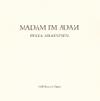 Nurse With Wound's famous Influence List included in the sleeve notes for their debut LP Chance Meeting on a Dissecting Table...has created endless frustration in my life, leading me to spend far toomuch trolling used record sites and online auctions looking to completemy NWW List collection. My goal is to own at least one record from eachof the artists listed, which has frequently seemed an unattainablegoal, the list jam-packed with hopelessly arcane one-offs released intiny editions on small European labels throughout the 60's and 70's.Approaching the task scientifically, I began at the alphabeticalbeginning of the list. No problem there, I was easily able to trackdown Spalax CD reissues of the first few Agitation Free albums; but thesecond artist on the list, Pekka Airaksinen, had me stumped for years.There was nothing I could do but move on to Airway and pretend that Ididn't care about this Finnish avant-garde obscurity. I later found outthat Airaksinen was the main artistic force behind The Sperm — thecreators of the fabulously rare Shh! LP — who also appear lateron the list. As if to answer my insane record-collector prayers,Finland's Love Records have issued this double-disc compilation Madam, I'm Adamto serve as the first widely-available introduction to PekkaAiraksinen's long and fruitful career as one of Finland's most prolificavant-garde electronic artists. Disc one compiles various highlightsstretching from 1968 to 2002 under various guises including The Sperm,Gandhi-Freud and Ajraxin. For disc two, a group of artists from Europeand the UK were invited to contribute reinterpretations of Airaksinen'smusic, the tracklist mirroring that of the first disc. The Sperm'suniquely architectural noise-rock presages industrial music, and attimes - as on the beautifully oppressive "Korvapoliklinikka Hesperia" —shows similarities to future envelope-pushers Dead C and Sunn O))). AsAiraksinen progressed into his 70's period, heavy distortion andimprovised passages of shambling, distorted chaos were soon replaced bya new emphasis on electronic instrumentation and rhythms.Gandhi-Freud's "Molybdene" utilizes synthesizers to create a grainystructure of lopsided arpeggiations. From this point forward,Airaksinen seems to be interested in the myriad possible manifestationsof electronic music, from the odd, I Ching-derived mathematical timesignatures of his early 80's work on the Roland 808, to his currentexploration of techno and ambient musics, all impregnated with hisrabidly uncommercial aesthetic and rigorous application of conceptualstructure. The remixes on the second disc attempt to find contemporaryapplications for Airaksinen's ideas, from the hallucinogenic,post-Timbaland rhythmic interpolations of Nurse With Wound, to theobnoxiously uninteresting digital hardcore of Philipp Quehenberger.Mira Calix contributes a remix of The Sperm that inexplicably buriesthe track under a poorly-executed synthesized orchestral. Along theway, Simon Wickham-Smith and Airaksinen himself turn in mildlyinteresting hijackings of the original works. Most appallingly for arare-music addict, the liner notes directed me towards Pekka's ownwebsite for his Dharmakustannus CD-R label, where for a premium of 20 Euros a pop, you can own everything from his extensive back catalog. Madam I'm Adamdelivers on its stated goals: a reasonably priced introduction to thehistory and continued influence of one of the underground's most uniquebodies of work.
Nurse With Wound's famous Influence List included in the sleeve notes for their debut LP Chance Meeting on a Dissecting Table...has created endless frustration in my life, leading me to spend far toomuch trolling used record sites and online auctions looking to completemy NWW List collection. My goal is to own at least one record from eachof the artists listed, which has frequently seemed an unattainablegoal, the list jam-packed with hopelessly arcane one-offs released intiny editions on small European labels throughout the 60's and 70's.Approaching the task scientifically, I began at the alphabeticalbeginning of the list. No problem there, I was easily able to trackdown Spalax CD reissues of the first few Agitation Free albums; but thesecond artist on the list, Pekka Airaksinen, had me stumped for years.There was nothing I could do but move on to Airway and pretend that Ididn't care about this Finnish avant-garde obscurity. I later found outthat Airaksinen was the main artistic force behind The Sperm — thecreators of the fabulously rare Shh! LP — who also appear lateron the list. As if to answer my insane record-collector prayers,Finland's Love Records have issued this double-disc compilation Madam, I'm Adamto serve as the first widely-available introduction to PekkaAiraksinen's long and fruitful career as one of Finland's most prolificavant-garde electronic artists. Disc one compiles various highlightsstretching from 1968 to 2002 under various guises including The Sperm,Gandhi-Freud and Ajraxin. For disc two, a group of artists from Europeand the UK were invited to contribute reinterpretations of Airaksinen'smusic, the tracklist mirroring that of the first disc. The Sperm'suniquely architectural noise-rock presages industrial music, and attimes - as on the beautifully oppressive "Korvapoliklinikka Hesperia" —shows similarities to future envelope-pushers Dead C and Sunn O))). AsAiraksinen progressed into his 70's period, heavy distortion andimprovised passages of shambling, distorted chaos were soon replaced bya new emphasis on electronic instrumentation and rhythms.Gandhi-Freud's "Molybdene" utilizes synthesizers to create a grainystructure of lopsided arpeggiations. From this point forward,Airaksinen seems to be interested in the myriad possible manifestationsof electronic music, from the odd, I Ching-derived mathematical timesignatures of his early 80's work on the Roland 808, to his currentexploration of techno and ambient musics, all impregnated with hisrabidly uncommercial aesthetic and rigorous application of conceptualstructure. The remixes on the second disc attempt to find contemporaryapplications for Airaksinen's ideas, from the hallucinogenic,post-Timbaland rhythmic interpolations of Nurse With Wound, to theobnoxiously uninteresting digital hardcore of Philipp Quehenberger.Mira Calix contributes a remix of The Sperm that inexplicably buriesthe track under a poorly-executed synthesized orchestral. Along theway, Simon Wickham-Smith and Airaksinen himself turn in mildlyinteresting hijackings of the original works. Most appallingly for arare-music addict, the liner notes directed me towards Pekka's ownwebsite for his Dharmakustannus CD-R label, where for a premium of 20 Euros a pop, you can own everything from his extensive back catalog. Madam I'm Adamdelivers on its stated goals: a reasonably priced introduction to thehistory and continued influence of one of the underground's most uniquebodies of work.samples:



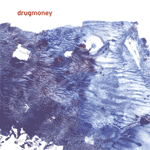 The cover is the first hint that I'm not meant to be comfortablelistening to this record. The second hint comes in the shape of slowlyfulgurating tones coating the room in a fine myst. Brent Gutzeit hascreated a horrifying record by placing motors on the strings of pianosand then manipulating them into tools of the devil (surely that's allthis sound can be). "Piano Motor Skills #2" begins with the slowchugging of some machine, perhaps underground, restlessly performingits task. The bells of far off places resonate over a cloud-coveredcity and somewhere in the alleys lurks a beast ready to feast on somefoolish visitor who has wandered astray. The effect of the long dronesand the carefully mixed rhythms is an atmosphere that sparks andtwitches with tension; the second half of this first track feels like aslow camera pan over this frozen city in my mind, like something out ofa Stanley Kubrick film... only more alien, more remote, and moremonumental. While much of this album is minimalistic, there's anenormity in its soul that breathes through every second. "RidingHorses" creeps along ominously and carefully but feels gigantic as ifit were a sonic photo of some Lovecraftian landscape filled withmonsters unknown to humankind. It slowly fades away into "400 Blows," apiece haunted by warmer and less intimidating tones. As it progresses,the mood becomes increasingly relaxed, as though the horrors of theprevious movements were being massaged out of my shoulders. Gutzeit'saddition of a monastic relief-zone at the end of this record adds adimension to this record that increases its listenability. "400 Blows"would be a great happy ending for Drug Money,but I was faked into believing the ending could ever be happy. Anuntitled and unlisted track closes the album on a very sickly note. Itbegins with bird calls and natural sounds, but ends with a creepingsickness manifested in the sound of overwhelming and powerful bellsroaring in from some place unknown. I'd like to listen to this recordjust after watching a very scary movie. Perhaps with a single candle,the curtains drawn, and a mind for seeing things that may or may not bethere.
The cover is the first hint that I'm not meant to be comfortablelistening to this record. The second hint comes in the shape of slowlyfulgurating tones coating the room in a fine myst. Brent Gutzeit hascreated a horrifying record by placing motors on the strings of pianosand then manipulating them into tools of the devil (surely that's allthis sound can be). "Piano Motor Skills #2" begins with the slowchugging of some machine, perhaps underground, restlessly performingits task. The bells of far off places resonate over a cloud-coveredcity and somewhere in the alleys lurks a beast ready to feast on somefoolish visitor who has wandered astray. The effect of the long dronesand the carefully mixed rhythms is an atmosphere that sparks andtwitches with tension; the second half of this first track feels like aslow camera pan over this frozen city in my mind, like something out ofa Stanley Kubrick film... only more alien, more remote, and moremonumental. While much of this album is minimalistic, there's anenormity in its soul that breathes through every second. "RidingHorses" creeps along ominously and carefully but feels gigantic as ifit were a sonic photo of some Lovecraftian landscape filled withmonsters unknown to humankind. It slowly fades away into "400 Blows," apiece haunted by warmer and less intimidating tones. As it progresses,the mood becomes increasingly relaxed, as though the horrors of theprevious movements were being massaged out of my shoulders. Gutzeit'saddition of a monastic relief-zone at the end of this record adds adimension to this record that increases its listenability. "400 Blows"would be a great happy ending for Drug Money,but I was faked into believing the ending could ever be happy. Anuntitled and unlisted track closes the album on a very sickly note. Itbegins with bird calls and natural sounds, but ends with a creepingsickness manifested in the sound of overwhelming and powerful bellsroaring in from some place unknown. I'd like to listen to this recordjust after watching a very scary movie. Perhaps with a single candle,the curtains drawn, and a mind for seeing things that may or may not bethere. The Italian label continues its valuable new series of archival releases with this 1998 collaboration between two of France's most active contemporary concret-ists and the old-guard explorer to whom they are most indebted. Chion's sprawling tape collages are the obvious precedents for much of Marchetti's and Noetinger's solo work, and his influence is certainly felt on this live performance from the Festival Musique Action, an event that catches the younger musicians still very taken with their elder's drifting compositional technique.
The Italian label continues its valuable new series of archival releases with this 1998 collaboration between two of France's most active contemporary concret-ists and the old-guard explorer to whom they are most indebted. Chion's sprawling tape collages are the obvious precedents for much of Marchetti's and Noetinger's solo work, and his influence is certainly felt on this live performance from the Festival Musique Action, an event that catches the younger musicians still very taken with their elder's drifting compositional technique. Boston's 27 is one of my favorite local groups. It's not simply because their music is a warm welcome against the typical local average rock scene, but Ayal and Maria are two of the nicest people I think I know. Local radio colleague Tracy alerted me to their new release and I had to stop by their show at the Middle East one Friday night to see if it was true or available (well, and to say hi of course). Luckily they had some pre-release limited version that I was able to get fresh out of the box. Unfortunately, I had to be at work at 3:30 the following morning and couldn't stay for their set. Otherwise, I'd film them for The Eye (I plan on doing this eventually).
Boston's 27 is one of my favorite local groups. It's not simply because their music is a warm welcome against the typical local average rock scene, but Ayal and Maria are two of the nicest people I think I know. Local radio colleague Tracy alerted me to their new release and I had to stop by their show at the Middle East one Friday night to see if it was true or available (well, and to say hi of course). Luckily they had some pre-release limited version that I was able to get fresh out of the box. Unfortunately, I had to be at work at 3:30 the following morning and couldn't stay for their set. Otherwise, I'd film them for The Eye (I plan on doing this eventually). "The finest of the fine things"... that's what MF Doom promises youabout six minutes into this album, and you'll be forgiven if the firstthing you think of is asshole partiers at some mansion-warming affair,puking on the rug and having sex in the pool. Instead, though, theSupervillain and Madlib throw open the doors to their very own bistro,sweeping the promise of crappy fried finger-food out into the gutterand offering up a satisfying handful of a sandwich instead. That's afair description of what follows, too: at just a hair over 46 minuteslong, Madvillainyisn't dragged down by the twenty-six guest MCs and nine-piece elephantorchestras that clog up your average MTV-flogged double album. There'san economy to the tracks (which average about two minutes apiece) thatI haven't heard since Naked City or Morgan Fisher's Miniaturescompilations, mainly because there aren't any choruses anywhere in, er,sight. Deprived of the chance for easy repetition, Madlib's muffledpianos and sunny-cafe accordions amble into the mix, do their thing,and depart just as quickly as the verses do. And those verses arepriceless: just like Gift of Gab does with his innumerable verbs, Doomstacks absurdity on top of absurdity until he finally has to take abreath... and then he moves on. With ideas coming and going so quickly,the results should sound haphazard or cluttered, but the individualtracks and elements all flow together without a hitch, forming acoherent comic book universe all their own; for once, theordinarily-also-ran addition of a CD-ROM video complements the musicreally well, too, adding an extra hit of Jack Kirby lunacy and rip-offSea Monkeys ads to an album that just about conjures those images onits own. Surrounded by that kind of silliness, the palpable anger of"Strange Ways" sticks out something fierce: it's a clear-headedbackhand at the warmongers of the world, and it connects that muchharder for the contrast. There's not much else going on in thestorytelling department, but the dominant scissor-swinging-potheadcollage atmosphere suits me just fine. Bring Twinkies.
"The finest of the fine things"... that's what MF Doom promises youabout six minutes into this album, and you'll be forgiven if the firstthing you think of is asshole partiers at some mansion-warming affair,puking on the rug and having sex in the pool. Instead, though, theSupervillain and Madlib throw open the doors to their very own bistro,sweeping the promise of crappy fried finger-food out into the gutterand offering up a satisfying handful of a sandwich instead. That's afair description of what follows, too: at just a hair over 46 minuteslong, Madvillainyisn't dragged down by the twenty-six guest MCs and nine-piece elephantorchestras that clog up your average MTV-flogged double album. There'san economy to the tracks (which average about two minutes apiece) thatI haven't heard since Naked City or Morgan Fisher's Miniaturescompilations, mainly because there aren't any choruses anywhere in, er,sight. Deprived of the chance for easy repetition, Madlib's muffledpianos and sunny-cafe accordions amble into the mix, do their thing,and depart just as quickly as the verses do. And those verses arepriceless: just like Gift of Gab does with his innumerable verbs, Doomstacks absurdity on top of absurdity until he finally has to take abreath... and then he moves on. With ideas coming and going so quickly,the results should sound haphazard or cluttered, but the individualtracks and elements all flow together without a hitch, forming acoherent comic book universe all their own; for once, theordinarily-also-ran addition of a CD-ROM video complements the musicreally well, too, adding an extra hit of Jack Kirby lunacy and rip-offSea Monkeys ads to an album that just about conjures those images onits own. Surrounded by that kind of silliness, the palpable anger of"Strange Ways" sticks out something fierce: it's a clear-headedbackhand at the warmongers of the world, and it connects that muchharder for the contrast. There's not much else going on in thestorytelling department, but the dominant scissor-swinging-potheadcollage atmosphere suits me just fine. Bring Twinkies.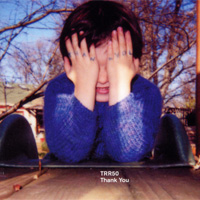 Various artist compilations are a hard sell to stores and distributors,however, I don't think I know of any authentic music fan who doesn'tlove them. Thank Youis Temporary Residence's 50th catalogue number (however itchronologically is about the 60-somethingth release) and honors boththe bands and the fans by collecting a small number of great tracksfrom the best that TRL has to offer -AND- uses only fan-contributedartwork solicited from the web site. Like any great compilation, it hasbeen years in the making. (I think I remember hearing word about thisback in 2001.) For Fridge fans who didn't want to spend over $30 for aJapanese import with pesky bonus tracks, the band completes theircollection by donating the 9+ minute "Five Combs," which, along with"Surface Noise," (offered as a free MP3 from their website) makes upthe two tracks left off the non-Japanese versions. The collectioncontinues with various familiar faces and loads of blissfulinstrumental rock tunes like the acoustic fingerpicked "Jignauseum" byKilowatthours, the hypnotic 8+ minute "Bell Jar" by Tarentel, andclosing number (approporiately titled "The Closer") by Sonna. A jaggedrock number from Rumah Sakhit and trippy post-nothing contribution fromKammerflimmer Kollektief, along with the only vocal track (by HalifaxPier), give the collection a little more seasoning. Label superstarsExplosions in the Sky give up a rare track while Xian Hawkins, now 4ADartist, gives perhaps one of his most compelling Sybarite tracks todate, utilizing guitars and electronic processing reminding me howsurprised I am that he doesn't have more snotty European musicpressmongers' heads spinning. For something that's been anticipated solong and a label with as many friends as Jeremy De Vine has, 11 songsseems at first kinda slim, but clearly representative of TemporaryResidence, which has always been about quality, not quantity. It does,however represent more of the past of Temporary Residence and doesn'tserve as a good showcase of some of the newer groups on the roster,like Lazarus, Eluvium, Icarus, The Anomoanon, the faboo Nice Nice,Nightfist, or even Evergreen. With any luck there won't be 49 morereleases until the next compilation.
Various artist compilations are a hard sell to stores and distributors,however, I don't think I know of any authentic music fan who doesn'tlove them. Thank Youis Temporary Residence's 50th catalogue number (however itchronologically is about the 60-somethingth release) and honors boththe bands and the fans by collecting a small number of great tracksfrom the best that TRL has to offer -AND- uses only fan-contributedartwork solicited from the web site. Like any great compilation, it hasbeen years in the making. (I think I remember hearing word about thisback in 2001.) For Fridge fans who didn't want to spend over $30 for aJapanese import with pesky bonus tracks, the band completes theircollection by donating the 9+ minute "Five Combs," which, along with"Surface Noise," (offered as a free MP3 from their website) makes upthe two tracks left off the non-Japanese versions. The collectioncontinues with various familiar faces and loads of blissfulinstrumental rock tunes like the acoustic fingerpicked "Jignauseum" byKilowatthours, the hypnotic 8+ minute "Bell Jar" by Tarentel, andclosing number (approporiately titled "The Closer") by Sonna. A jaggedrock number from Rumah Sakhit and trippy post-nothing contribution fromKammerflimmer Kollektief, along with the only vocal track (by HalifaxPier), give the collection a little more seasoning. Label superstarsExplosions in the Sky give up a rare track while Xian Hawkins, now 4ADartist, gives perhaps one of his most compelling Sybarite tracks todate, utilizing guitars and electronic processing reminding me howsurprised I am that he doesn't have more snotty European musicpressmongers' heads spinning. For something that's been anticipated solong and a label with as many friends as Jeremy De Vine has, 11 songsseems at first kinda slim, but clearly representative of TemporaryResidence, which has always been about quality, not quantity. It does,however represent more of the past of Temporary Residence and doesn'tserve as a good showcase of some of the newer groups on the roster,like Lazarus, Eluvium, Icarus, The Anomoanon, the faboo Nice Nice,Nightfist, or even Evergreen. With any luck there won't be 49 morereleases until the next compilation.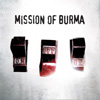 Everything new is old again with a rash of reunions among some of themore seminal bands in underground music, returning to eager audiencesno longer placated by the throngs of modern bands who wear theirinfluences all over their faces and not just on their sleeves. Spurredon by the critical and creative success of Wire's scorching millennialreleases, Boston's Mission of Burma decided they had more to say, inspite of twenty two years of inactivity and vocalist/guitarist RogerMiller's severe tinnitus. Though any attempt at recapturing the sparkof decade's past is a gamble, ONoffON sounds like it could have come just months after Burma's sole LP, 1982's Vs.The original members (with Bob Weston, replacing Martin Swope as theband's tape manipulator) demonstrate that they have not lost any of thestrength, verve, and creativity that define their early releases andthat the off time only deepened the maturity and intelligence that setsthem apart from their contemporaries. The slicing snarl of the guitarsat the opening of "The Setup" is a welcome sound, with the trademarkmetal on metal grinding signaling that Burma is ready to pick up rightwhere they left off. Indicative of this transition from then to now isthe inclusion of three previously unreleased Burma songs that have beenkicking around for twenty years, "Hunt Again," "Dirt," and "Playland."These tracks, until now only available on a compilation of outtakes,appear in much more searing versions, particularly "Playland," whichsqualls with fuzzy dissonance amidst Miller's abusive vocal delivery.Miller offers up some of the most incindeary songs of the album."Wounded World," is a swirling accusation with a tuneful, shoutedchorus that positions the song as an epic rallying cry, a call to armsthat begs raised voices to join in. Rivaling that force is PeterPrescott's "The Enthusiast," a barking, braying track with a relentlessriff, deep and full bodied. "What We Really Want," written by ClintConley in collaboration with poet Holly Anderson (who also lent hertalents to Vs's "Mica"), is a pensive, brooding track thatunderscores Burma's ability to craft an intense rocker that finds itsenergy not just in speed but in meaningful, expressive tension thatunfolds with care. Conley's contributions recall both his early songswith Burma and his more recent outings with his bandConsonant-intricately crafted and concerned with a poetic connectionbetween his words and music. Miller's "Falling" also captures thissensibility, retaining the rough edged sounds of Burma, but augmentingit with subdued acoustic guitar and an emphasis on the cerebral flairsboth musically and lyrically. Burma was never one for typical rockformulas, toying with things like dissonance, tonality, and songstructure to develop songs that were jarringly fresh and enticing. ONoffONis a remarkable record, standing just as tall as the rest of thecatalog and almost surely cementing Mission of Burma as a potent force,not just for their influence on today but for their new endeavors aswell.
Everything new is old again with a rash of reunions among some of themore seminal bands in underground music, returning to eager audiencesno longer placated by the throngs of modern bands who wear theirinfluences all over their faces and not just on their sleeves. Spurredon by the critical and creative success of Wire's scorching millennialreleases, Boston's Mission of Burma decided they had more to say, inspite of twenty two years of inactivity and vocalist/guitarist RogerMiller's severe tinnitus. Though any attempt at recapturing the sparkof decade's past is a gamble, ONoffON sounds like it could have come just months after Burma's sole LP, 1982's Vs.The original members (with Bob Weston, replacing Martin Swope as theband's tape manipulator) demonstrate that they have not lost any of thestrength, verve, and creativity that define their early releases andthat the off time only deepened the maturity and intelligence that setsthem apart from their contemporaries. The slicing snarl of the guitarsat the opening of "The Setup" is a welcome sound, with the trademarkmetal on metal grinding signaling that Burma is ready to pick up rightwhere they left off. Indicative of this transition from then to now isthe inclusion of three previously unreleased Burma songs that have beenkicking around for twenty years, "Hunt Again," "Dirt," and "Playland."These tracks, until now only available on a compilation of outtakes,appear in much more searing versions, particularly "Playland," whichsqualls with fuzzy dissonance amidst Miller's abusive vocal delivery.Miller offers up some of the most incindeary songs of the album."Wounded World," is a swirling accusation with a tuneful, shoutedchorus that positions the song as an epic rallying cry, a call to armsthat begs raised voices to join in. Rivaling that force is PeterPrescott's "The Enthusiast," a barking, braying track with a relentlessriff, deep and full bodied. "What We Really Want," written by ClintConley in collaboration with poet Holly Anderson (who also lent hertalents to Vs's "Mica"), is a pensive, brooding track thatunderscores Burma's ability to craft an intense rocker that finds itsenergy not just in speed but in meaningful, expressive tension thatunfolds with care. Conley's contributions recall both his early songswith Burma and his more recent outings with his bandConsonant-intricately crafted and concerned with a poetic connectionbetween his words and music. Miller's "Falling" also captures thissensibility, retaining the rough edged sounds of Burma, but augmentingit with subdued acoustic guitar and an emphasis on the cerebral flairsboth musically and lyrically. Burma was never one for typical rockformulas, toying with things like dissonance, tonality, and songstructure to develop songs that were jarringly fresh and enticing. ONoffONis a remarkable record, standing just as tall as the rest of thecatalog and almost surely cementing Mission of Burma as a potent force,not just for their influence on today but for their new endeavors aswell. Creating some of the most hauntingly beautiful music seems to comeeasily to the members of the gy!be nuclear family, but on this EP thesparse ensemble creates some of the most honest and unorganized musicof their careers. What started out as Efrim's studio noodling soonbroke out into more collaborative sessions, and eventually the songswere becoming something so special that they deserved and beckoned tobe finished. It's somewhat of a mixed bag in terms of pacing andsubject matter, and the songs come off as a bit of a sampler platter ofthe different bands that these members play in. The more the CDprogresses, however, the more I got the feeling that this music isgetting further and further away from the pure drama and epic dynamicsof the mothership group and more into the territory of smallercharacter pieces. The politics are still present, notably in the firstmoments of the EP where echoing shouts of "More Action! Less Tears!"are heard and on the second track "Microphones in the Trees," aparanoid study of the relentless monitoring of a nation's citizens.Through it all, Efrim is becoming a more capable and stronger vocalist,and the four voice choir adds real gusto to these fairly simple songs.As usual, my pulse quickened any time there was a swell in the song,where the instruments rose in volume or the playing became morefervent, but even during the quieter, subtler moments I was stillentranced. The raw energy of "More Action! Less Tears!" is certainlywelcome, especially considering the quiet nature of most Silver Mt.releases, and even though there is an incredibly sloppy rhythm thatnever maintains a consistent timing, it's still a hair-raising affair.Then the band descends into nigh-Cerberus Shoal territory on theaforementioned "Trees," with odd vocal prowess and gentle piano andguitar. The strangest and most captivating track is the last, whereEfrim goes it alone with toybox and guitar, letting whatever strikeshis fancy escape his lips. The track represents his most assuredlyrical and vocal performance ever, and the beauty of the whole releasewill capture me again and again whenever I listen to it.
Creating some of the most hauntingly beautiful music seems to comeeasily to the members of the gy!be nuclear family, but on this EP thesparse ensemble creates some of the most honest and unorganized musicof their careers. What started out as Efrim's studio noodling soonbroke out into more collaborative sessions, and eventually the songswere becoming something so special that they deserved and beckoned tobe finished. It's somewhat of a mixed bag in terms of pacing andsubject matter, and the songs come off as a bit of a sampler platter ofthe different bands that these members play in. The more the CDprogresses, however, the more I got the feeling that this music isgetting further and further away from the pure drama and epic dynamicsof the mothership group and more into the territory of smallercharacter pieces. The politics are still present, notably in the firstmoments of the EP where echoing shouts of "More Action! Less Tears!"are heard and on the second track "Microphones in the Trees," aparanoid study of the relentless monitoring of a nation's citizens.Through it all, Efrim is becoming a more capable and stronger vocalist,and the four voice choir adds real gusto to these fairly simple songs.As usual, my pulse quickened any time there was a swell in the song,where the instruments rose in volume or the playing became morefervent, but even during the quieter, subtler moments I was stillentranced. The raw energy of "More Action! Less Tears!" is certainlywelcome, especially considering the quiet nature of most Silver Mt.releases, and even though there is an incredibly sloppy rhythm thatnever maintains a consistent timing, it's still a hair-raising affair.Then the band descends into nigh-Cerberus Shoal territory on theaforementioned "Trees," with odd vocal prowess and gentle piano andguitar. The strangest and most captivating track is the last, whereEfrim goes it alone with toybox and guitar, letting whatever strikeshis fancy escape his lips. The track represents his most assuredlyrical and vocal performance ever, and the beauty of the whole releasewill capture me again and again whenever I listen to it.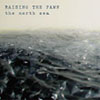 Whenever the weather gets warm, and my seasonal affect disorder slipsback into hibernation, I tend to want to put away my stacks ofaggressive noise discs and cuddle up to something a little morecomfortable, a little more bright. Last year around this time, thechoice was A Northern Chorus' Spirit Flags,a brilliantly pretty record that made up for a lack in dynamicism withsome gorgeous, soaring melodies born out of the shoegazer ethic. So itis not entirely by surprise that friend and labelmates Raising the Fawnare an early contender for a prime spot on the springtime soundtrack.Led by Broken Social Scene contributor John Crossingham, Raising theFawn's The North Sea is another brisk breeze of northern air toflush out the senses. The band has crafted a collection of memorablemelodies and vocalizations that dazzle in a diverse group of songs thatare sometimes comforting and sometimes unsettling. In either case, thesongs are well designed to leave a lasting impression. "Gwendolyn" isan effervescent blast with a looping, springy backbeat. The vocals arelively and vibrant, as Cunningham devastates the wistful, tender lyricswith an expertly employed falsetto. "July 23rd" is the fuzzy, dejectedballad that chronicles an inconceivable loss with such aplomb and anaffecting arrangement that simmers in the brushes as they coast acrossthe cymbals and the snare heads, sounding like the sea spray againstthe rocks. The intricacies of The North Sea elevate the subjectmatter of isolation, loneliness, the remote alienation they illustratewith imagery of derelict ships and drifting captains, so that thedarker tones are polarized and ultimately uplifting. The peakingchoruses of the title track are a perfect example of the lushness ofRaising the Fawn's sound shining through the conceptual mists they havecast around themselves. The richness of the band's sound conjures up aslightly less unhinged version of the full-band Songs:Ohia of Magnolia Electric Co..The final two tracks, which register at just over ten minutes each, areheavy hitting pieces. "Drownded" surges ahead with dense squalls ofguitar that erupt in a collision of chords and expansive post-rockelaboration. The song is a massive presence on an album that built itsfoundation on spacious melodies and singing, a true climax. "E.T.A."finds Raising the Fawn collapsing, emotionally rather thanstylistically, under the drama of their subject, sprawling out in anappropriately stirring last gasp. The North Sea is a perfectrecord for that seasonal transition, clinging to the colder thoughtsbut irrevocably enveloped in the searing yellow light and verdantgreens of spring.
Whenever the weather gets warm, and my seasonal affect disorder slipsback into hibernation, I tend to want to put away my stacks ofaggressive noise discs and cuddle up to something a little morecomfortable, a little more bright. Last year around this time, thechoice was A Northern Chorus' Spirit Flags,a brilliantly pretty record that made up for a lack in dynamicism withsome gorgeous, soaring melodies born out of the shoegazer ethic. So itis not entirely by surprise that friend and labelmates Raising the Fawnare an early contender for a prime spot on the springtime soundtrack.Led by Broken Social Scene contributor John Crossingham, Raising theFawn's The North Sea is another brisk breeze of northern air toflush out the senses. The band has crafted a collection of memorablemelodies and vocalizations that dazzle in a diverse group of songs thatare sometimes comforting and sometimes unsettling. In either case, thesongs are well designed to leave a lasting impression. "Gwendolyn" isan effervescent blast with a looping, springy backbeat. The vocals arelively and vibrant, as Cunningham devastates the wistful, tender lyricswith an expertly employed falsetto. "July 23rd" is the fuzzy, dejectedballad that chronicles an inconceivable loss with such aplomb and anaffecting arrangement that simmers in the brushes as they coast acrossthe cymbals and the snare heads, sounding like the sea spray againstthe rocks. The intricacies of The North Sea elevate the subjectmatter of isolation, loneliness, the remote alienation they illustratewith imagery of derelict ships and drifting captains, so that thedarker tones are polarized and ultimately uplifting. The peakingchoruses of the title track are a perfect example of the lushness ofRaising the Fawn's sound shining through the conceptual mists they havecast around themselves. The richness of the band's sound conjures up aslightly less unhinged version of the full-band Songs:Ohia of Magnolia Electric Co..The final two tracks, which register at just over ten minutes each, areheavy hitting pieces. "Drownded" surges ahead with dense squalls ofguitar that erupt in a collision of chords and expansive post-rockelaboration. The song is a massive presence on an album that built itsfoundation on spacious melodies and singing, a true climax. "E.T.A."finds Raising the Fawn collapsing, emotionally rather thanstylistically, under the drama of their subject, sprawling out in anappropriately stirring last gasp. The North Sea is a perfectrecord for that seasonal transition, clinging to the colder thoughtsbut irrevocably enveloped in the searing yellow light and verdantgreens of spring.
